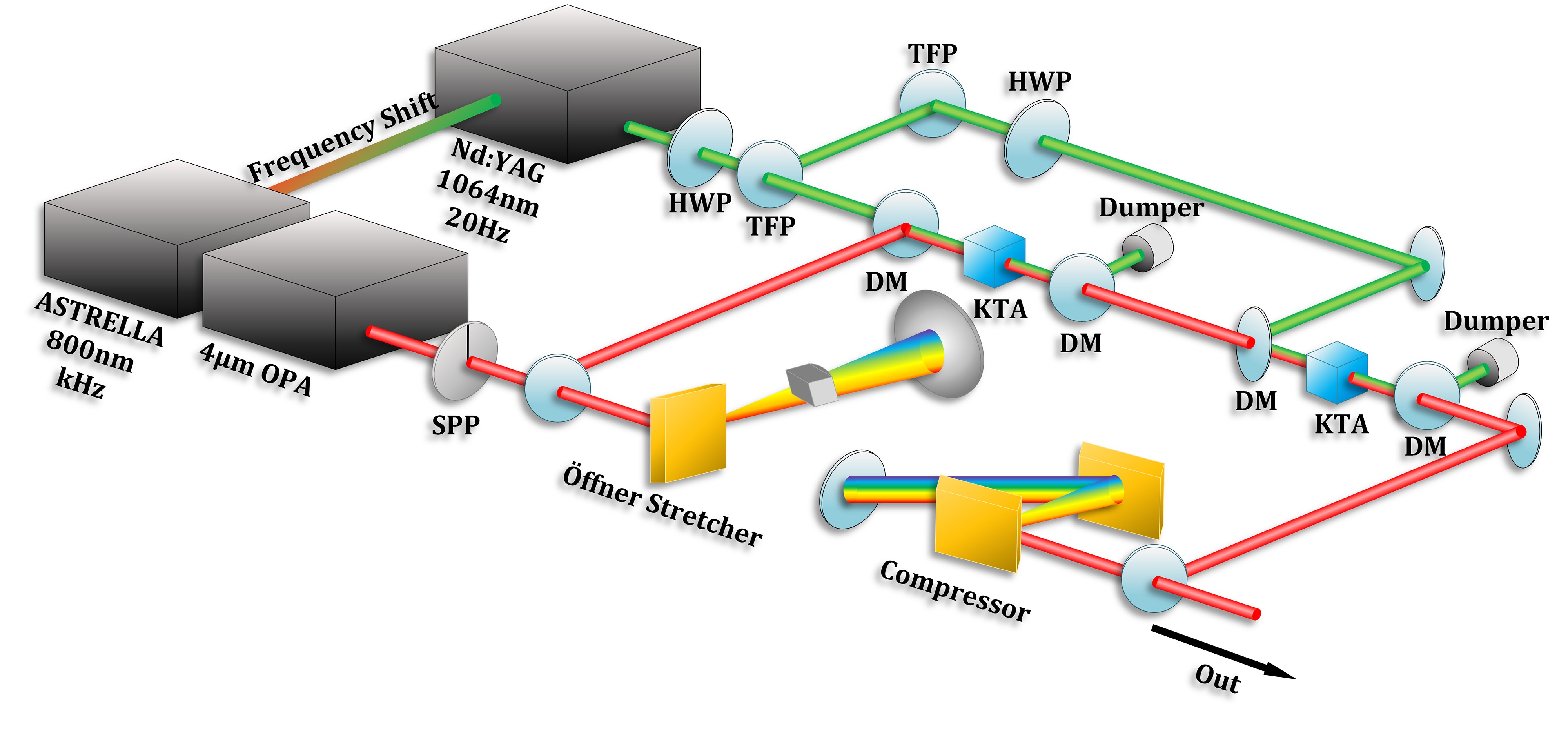An optical vortex, with doughnut intensity distribution and orbital angular momentum (OAM), refers to a beam whose wavefront shows a helical shape. Compared with the conventional Gaussian beam, it has acquired considerable interest in quantum information, optical trapping and manipulation, super-resolution microscopy and high-order harmonic generation (HHG). Optical parametric chirped pulse amplification (OPCPA), combining optical parametric amplification(OPA)and chirped pulse amplification (CPA) technologies, displays unique advantages, such as high gain, high temporal contrast, less thermal effect and tunable wavelength, and it has been widely employed in high peak power laser systems.
One recent study by a research team from Shanghai Institute of Optics and Fine Mechanics, Chinese Academy of Sciences (CAS), demonstrated a mid-infrared (mid-IR) femtosecond optical vortex laser, which was amplified by OPCPA technology. The result was published in Photonics Research.
In the experiment, the researchers generated a beam of low-energy mid-IR optical vortex and amplified it using OPCPA to output a high-energy optical vortex.
The optical vortex seed was generated from a femtosecond 4 μm laser by a silicon spiral phase plate made of silicon with the step height of 1650 nm and the topological charge of 1 before stretcher. Then the seed pulses were injected into the OPCPA system which was preceded by a conventional ![]() ffner-type stretcher and followed by a two-grating compressor.
ffner-type stretcher and followed by a two-grating compressor.
Since good transparency and nonlinear optical properties emerged in mid-IR region, two KTiOAsO4 (KTA) crystals were used in the OPAs, both of which were 10 mm length and were cut at θ = 40.8° relative to the z-axis normal for type II phase matching. Through using a two-stage collinear OPCPA amplifier, the chirped vortex pulse was amplified to 12.4 mJ with 200 nm full width at half maximum bandwidth. After compression, the vortex laser pulse with 9.53 mJ, 119 fs could be obtained.
By interfering with the plane wave, the vortex characteristics of the optical vortex amplified by OPCPA was verified. The amplified pulses still had the topological charge of 1.
They found that, since the OPCPA was less thermal effect and KTA was a temperature insensitive nonlinear crystal with a very high thermal acceptance, when a larger KTA crystal and higher pump energy were used, a higher conversion efficiency and output energy could be obtained. With efficient heat dissipation condition, the OPCPA system could support kW level working condition.
This high energy 4 μm optical vortex laser source provides a new tool in high field laser physics, and can suit as a driver laser for HHG to extend cutoff energy to keV range with OAM, as well as other secondary radiations. Moreover, this method can be further extended to optical vortex lasers with other wavelengths and higher peak power.

Schematic of the 4 μm optical vortex OPCPA system. (Image by SIOM)
Article website:
https://www.osapublishing.org/prj/abstract.cfm?uri=prj-8-3-421
Contact:
Mr. CAO Yong
General Administrative Office
Shanghai Institute of Optics and Fine Mechanics, CAS
Email: caoyong@siom.ac.cn